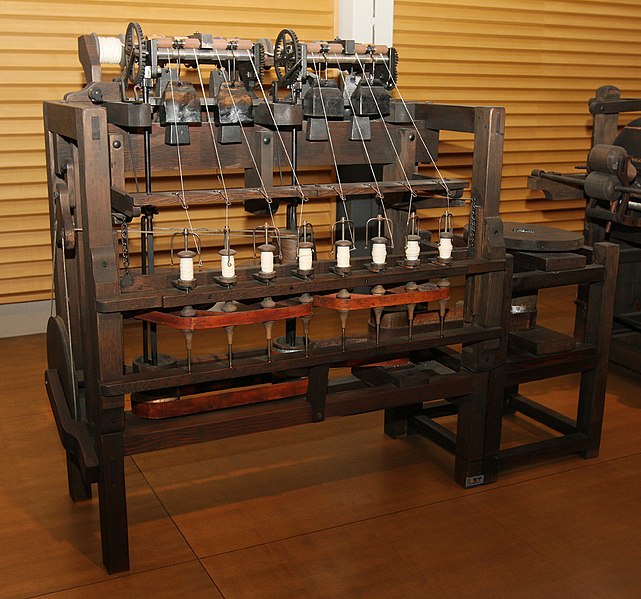Textile Industry
By: Britney Niese
The textile industrial revolution was very important all across Europe. Industrialization in Britain started with the textile industry and improving the way they made cotton. Before the mechanization of the textile industry, Britain produced mostly linen and wool and imported cotton textiles. “The organization of the textile industry was complicated and grossly inefficient” (Montagna). By the mid-1700s though, many important inventions came about, like the flying shuttle, spinning jenny, spinning mule, and many others making cotton and weaving more mechanical which was more efficient. These changes were not easily accepted which resulted in workers’ riots against the new machines. These machines along with other spinning and weaving inventions moved the textile industry along making a revolutionary change from domestic cotton making to mechanized cotton. “Gone were the days of the Domestic System, yielding to the new ways of the Factory System” (Montagna). These factories were large, dusty, poorly illuminated and ventilated and dangerous. The working conditions were not subject to much regulation, so it ended up being very dangerous for the people who continued to work in them, but these cotton factory jobs were the only places for the domestic cotton makers to go. To learn more about the textile industry follow this link- http://www.history.com/topics/industrial-revolution
http://youtu.be/3nCoklEPHxw
The flying shuttle: It was invented in 1733 by John Kay. This machine was the first step towards automatic weaving. It moved weaving from needing two people to one person being able to do more at a quicker pace.

The flying shuttle
by Unknown Author, used under CC0
The spinning jenny: In 1764, a British carpenter and weaver named James Hargreaves invented an improved spinning jenny. This was a hand-powered machine that was the first to improve the spinning wheel.

The spinning jenny
by Unknown Author, used under CC0
The water frame: This machine was invented by Richard Arkwright in 1764. It was the first powered textile machine. The water frame could produce stronger threads for yarn.
The spinning mule: In 1779, Samuel Crompton invented the spinning mule that combined the moving carriage of the spinning jenny with the rollers of the water frame. It gave the spinner great control over the weaving process and enabled many different types of yarn to be produced.
References:
Montagna, J. A. (1981). The industrial revolution. Yale-New Haven Teachers Institute.
History.com Staff. “Industrial Revolution.” History.com. 2009. http://www.history.com/topics/industrial-revolution (accessed 2014).
Unknown Author. (1891). Common fly shuttle loom. [Digital Image]. Retrieved from http://commons.wikimedia.org/wiki/File:PSM_V39_D320_Common_fly_shuttle_loom.jpg. Public domain image.
Unknown Author. (1891). Hargreave improved spinning jenny. [Digital Image]. Retrieved from http://commons.wikimedia.org/wiki/File:PSM_V39_D306_Hargreave_improved_spinning_jenny.jpg. Public domain image.
Morio. (2009). Arkwright’s Water Frame (replica). [Digital Image]. Retrieved from http://commons.wikimedia.org/wiki/File:18C_%28late%29_Arkwright_Water_Frame_%28replica%29.jpg. Available under Creative Commons Attribution-Share Alike 3.0 Unported.
Pezzab. (2007). Spinning mule. [Digital Image]. Retrieved from http://en.wikipedia.org/wiki/File:Mule-jenny.jpg. Available under Creative Commons Attribution-Share alike 3.0 Unported.


